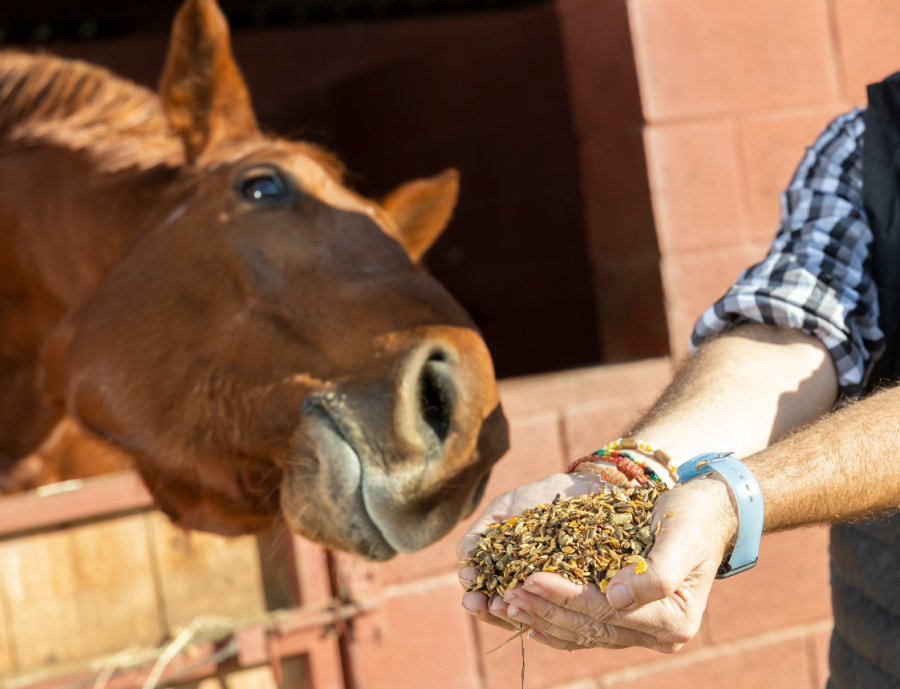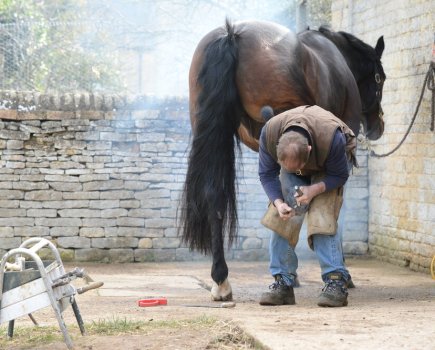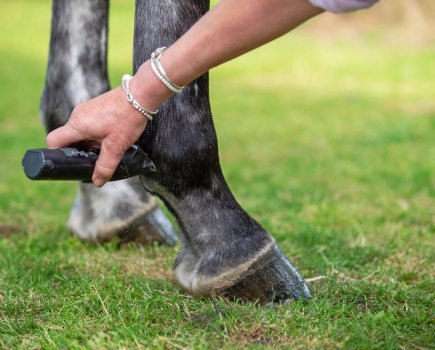When feeding a horse who is a good doer there are two key things to bear in mind. Firstly, that you provide the horse with a diet that is balanced but, secondly, doing it in a way that means you are not providing more calories than their body needs to fuel itself. Horses and ponies have adapted to break down and absorb as much nutrition from their diet as possible. Their natural diet can be fairly indigestible and lacking nutritional value and it’s because of this that horses will naturally graze for over 70% of the day.
As we demand more activity from our domestic horses, we provide appropriate support in both calorific and nutritional terms. The problem arises when the amount of calories we give our horses is out of balance when compared to their needs. Over-providing in this way is what causes a good doer to gain weight.
Being even slightly overweight can be a major cause of poor performance in horses; for every extra 10kg of weight your horse has to work 3.3% harder. This places extra stress on their heart, lungs and joints and so can have long-term consequences for your horse’s health. The most effective way to encourage weight loss is regular exercise, but there are also steps that you can take to help control and restrict calorie intake, while still providing all the micronutrients required on a daily basis.
Feeding a good doer
The following tips will help you achieve a horse with a healthy waistline all year round:
1 Feed a low-energy forage
The fibre side of your horse’s diet should be the first thing that you adjust. The natural temptation is usually to cut back on the amount of hay being offered, but this can cause digestive issues and so it is preferable to reduce the calorie content of your hay or haylage (ie its quality) rather than its quantity. Fibre should form the basis of every horse’s diet and when horses are stabled or on very restricted grazing they must be provided with supplementary forage to help keep the digestive system healthy and functioning efficiently.
For those who are overweight or prone to laminitis, hay should be soaked for 12–16 hours which removes the majority of the water soluble carbohydrates and significantly lowers its calorie content. Feeding hay that has been soaked for this amount of time is an excellent way of providing a good doer with the fibre they need while reducing calorie intake and aiding weight loss.
Even overweight horses should be eating a minimum of 1.5% of their bodyweight in total feed per day in order to maintain a healthy digestive system and fulfil their natural feeding behaviours. Splitting a horse’s daily hay allowance into several smaller meals throughout the day will extend feeding time and avoid lengthy periods when the horse has nothing to eat.
The use of small-holed haynets or a hay feeder designed to slow down feed intake are particularly useful in helping to keep good doers occupied and feeding in a way that mimics their natural lifestyle.
2 Provide a low-calorie, balanced diet
If intakes are unrestricted, good doers can often exceed their calorie needs from grazing alone, particularly in the spring when grass is starting to grow again. However, a forage-only diet is unlikely to supply your horse with sufficient quantities of vitamins and minerals to provide a fully balanced diet, and therefore a supplementary bucket feed will be necessary.
Carefully choosing a low-calorie balanced feed (of 8MJ/kg or less) and feeding it at recommended amounts — according to the horse’s size and workload as per guidelines on the feedbag — will provide all the vitamins and minerals and quality protein needed for a balanced diet, without too many additional calories for your horse to consume.
3 Limit starch and sugars in the diet
It is well recognised that overweight horses and ponies and those that have a tendency to gain weight easily are more at risk of developing laminitis. Alongside a calorie-controlled diet, those at risk of laminitis should ideally be fed feeds which have a combined starch and sugar level of 10% or less and are free from whole cereal grains and molasses.
Feeds that are high in fibre and low in starch and sugar are more natural for the horse than traditional cereal-based mixes and cubes. Not only can a high starch diet cause fizzy and excitable behaviour, but it is also more difficult to digest and can make the horse more susceptible to developing laminitis or colic. Instead of starchy cereals, choose feeds that use fibre and oil as energy sources.
4 Restrict grazing
Unproductive, poor quality grazing is best for good doers who gain weight easily, but as this isn’t often available, avoiding lush, fertilised pasture and restricting grass intakes is very important. Strip grazing, implementing a tracked grazing system and the use of a grazing muzzle can all significantly reduce a horse’s grass intake while helping to maintain natural grazing behaviour.
5 Increase exercise
Providing illness or unsoundness isn’t a problem, increasing the calories your horse uses through exercise will help to keep his waistline in check. While regular exercise is important for all round health, it is important to ensure your horse is fit enough for the work you are asking them to do and to implement an exercise programme that gradually increases in intensity, either in hand or ridden. Varying the pace and terrain that you ride will help to burn more calories, and so will interval training.
6 Keep a close eye on weight and condition
Regularly weighing and condition scoring will help you to pick up on changes in your horse’s condition more easily than relying on the naked eye alone. Body condition scoring is essentially a hands-on assessment of the amount of fat covering different areas of a horse’s body. Generally speaking you should be able to feel your horse’s ribs easily when you run your hand lightly across their ribcage. There should not be any fat pads, or signs of a crest developing on the neck, or a gutter running down the spine over the hindquarters to the tail.
Keeping a record of the weights and scores will help you to manage your horse and make adjustments to their diet and routine accordingly. Any extra calories a horse uses up to keep warm will aid weight loss, so only rugging when absolutely necessary or using a lighter weight rug than normal will help to encourage your horse to burn fat reserves to keep warm.
Main image by Shutterstock
Love hacking? Join our free #Hack1000Miles challenge and see how far you can go!
Subscribe to Your Horse Magazine – the perfect Christmas gift!








